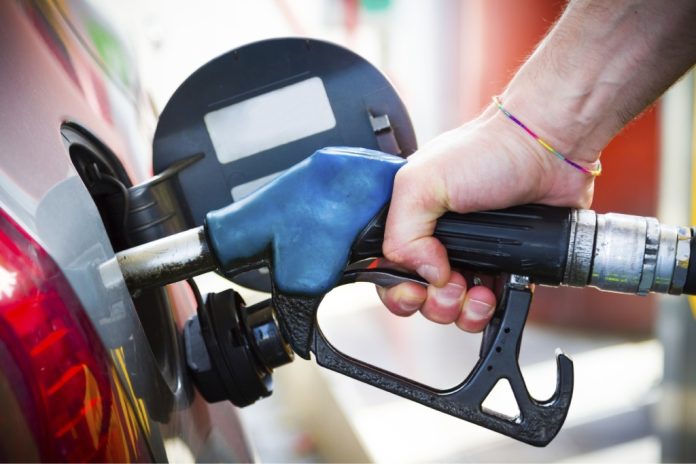30 years ago, drivers burned gasoline, almost without thinking about consumption, and today efficiency has become a key consumer quality of a car. But not everyone is ready to switch to a hybrid or an electric car: people are true to their habits and are wary of new technologies, preferring solutions that have been proven over the years. What to do if the appetite of the car began to put pressure on the family budget? It is quite possible to reduce fuel consumption on your own. In that article, we will look at 10 tips that will help reduce the consumption of gasoline or diesel. You can also estimate fuel consumption using the miles per gallon calculator from the JunkCarsUs company.
Table of Contents
Tip 1: Skip warm-ups
Why does fuel consumption soar in winter? First of all, due to the regular engine warm-ups that most drivers practice.
The instructions for any modern car say: start moving immediately after starting the engine, it is designed for this. This was done not only for the sake of the environment: exhaust catalytic converters (very expensive parts) clog most of all precisely at idle. Well, the fuel, obviously, burns in vain.
But many drivers warm the engine “to the stop” even in summer: cars stand in the yards for a long time, gassing the air, clogging the catalysts, and burning gasoline aimlessly. Give up this practice, harmful for the car, and for others, and for your wallet. Start the engine and drive off after 1-2 minutes, without giving too high speed, while the engine is cold – it will warm up much faster on the go.
And in order to get into a warm cabin in winter without preheating, use engine preheaters and heated covers.
Tip 2: change your driving style
In families where the car is shared, drivers are well aware that the fuel consumption of the same car varies from driver to driver. Driving style is a determining factor: the difference between aggressive and calm driving can be 0,53-0,79 gallons per 62,14 miles.
But do not put an equal sign between low fuel consumption and the speed of a turtle. Driving economically means driving efficiently. You can move around the city quite dynamically, but thoughtfully: do not accelerate if there is a traffic jam or a red traffic light ahead; use engine braking; go “coasting” more often, without touching the gas pedal on the descents, and before the ascents, on the contrary, accelerate in advance. A good driver’s reading of the road situation not only increases safety but also saves gasoline.
Ultimately, the fuel efficiency of a ride is determined not by average speed, but by the uniformity of movement. Smooth driving at stable engine speeds, without sudden braking and acceleration is the most beneficial.
Tip 3: Use ECO modes
Many cars have an ECO function – an economical driving mode. The implementation is different: ECO can be a separate button that activates an economical engine and transmission program, or a hint light on the dashboard informing you that you are in the “green” rev range with minimal fuel consumption and emissions. In any case, driving in ECO mode is the most economical.
And outside the city, cruise control will help to reduce consumption. With automatic cruise control, there are no sudden accelerations and unnecessary gear changes, which contributes to economical driving.
Tip 4: Fill up with good fuel
Surely you have noticed that when you change the gas station, fuel consumption also changes. The quality of the fuel directly affects the efficiency of its combustion, and hence the efficiency of the engine. On good gasoline with a high octane number, the engine develops full power. Consumption is also reduced, compensating for the higher cost of fuel. Therefore, the cheapest gasoline from a dubious gas station is unlikely to be more profitable than a more expensive, but high-quality one.
Tip 5: Reduce friction
The internal combustion engine is a very inefficient mechanism, despite the best efforts of engineers. Most of the fuel is spent not on the rotation of the wheels, but on overcoming mechanical losses, half of which are friction losses in the engine itself. Therefore, even a small reduction in friction reduces fuel consumption.
Friction is effectively controlled by antifriction additives or friction modifiers. They do not change the properties of the oil, but make the metal surfaces of the engine more slippery, which is why they are often called tribological compounds, and not additives).
Tip 6: Don’t carry too much
Engineers are fighting for every kilogram, trying to lighten the car, because a light car goes faster and more economically. And we negate their efforts by carrying a bunch of unnecessary things with us. Arrange an audit of the trunk: often there are items for a picnic and outdoor activities, children’s sleds and bicycles, spare parts bought for the future, and simply forgotten things. All this gives a noticeable increase in weight, and as a result – high fuel consumption.
Tip 7: Plan your route
In large cities, motorists burn almost half of the gasoline in traffic jams. Maybe consider alternative routes? Even more extended ones.
Tip 8: Watch your car
Increased fuel consumption is not a feature, but a sign of a malfunction. Monitor the condition of the car: change filters (fuel, air) and spark plugs in time – they directly affect consumption. The brake system can also be a surprise: jammed pads or caliper parts do not allow the wheels to rotate freely and are often the cause of high fuel consumption. Many sensors are responsible for the correct formation of the fuel-air mixture – if the flow rate suddenly increased, then computer diagnostics will help find the culprit.
Tip 9: Don’t use thick oil
Many car owners use a more viscous than prescribed motor oil “for better protection.” Sometimes there is a sense in this – with engine wear and pronounced oil consumption, a high viscosity can solve some of the problems. But for a serviceable engine, thick oil is just additional friction losses that increase gas mileage.
Tip 10: Watch your tires
All efforts to reduce fuel consumption are useless if the wheels of the car do not roll well on asphalt. Tire pressure plays a key role – it must be checked at least once a month, and preferably more often. The recommended parameters are indicated on the door plate and a pressure gauge is required to check them.
Summary
If you are worried about the increased fuel consumption, then you can fix the situation. To do this, you need to change your driving style, as well as better service your car. If you want to sell a car and buy a new vehicle, JunkCarsUs will help you with this task. You can also find important tools like the miles per gallon calculator, total loss calculator, or car depreciation calculator on the site.












